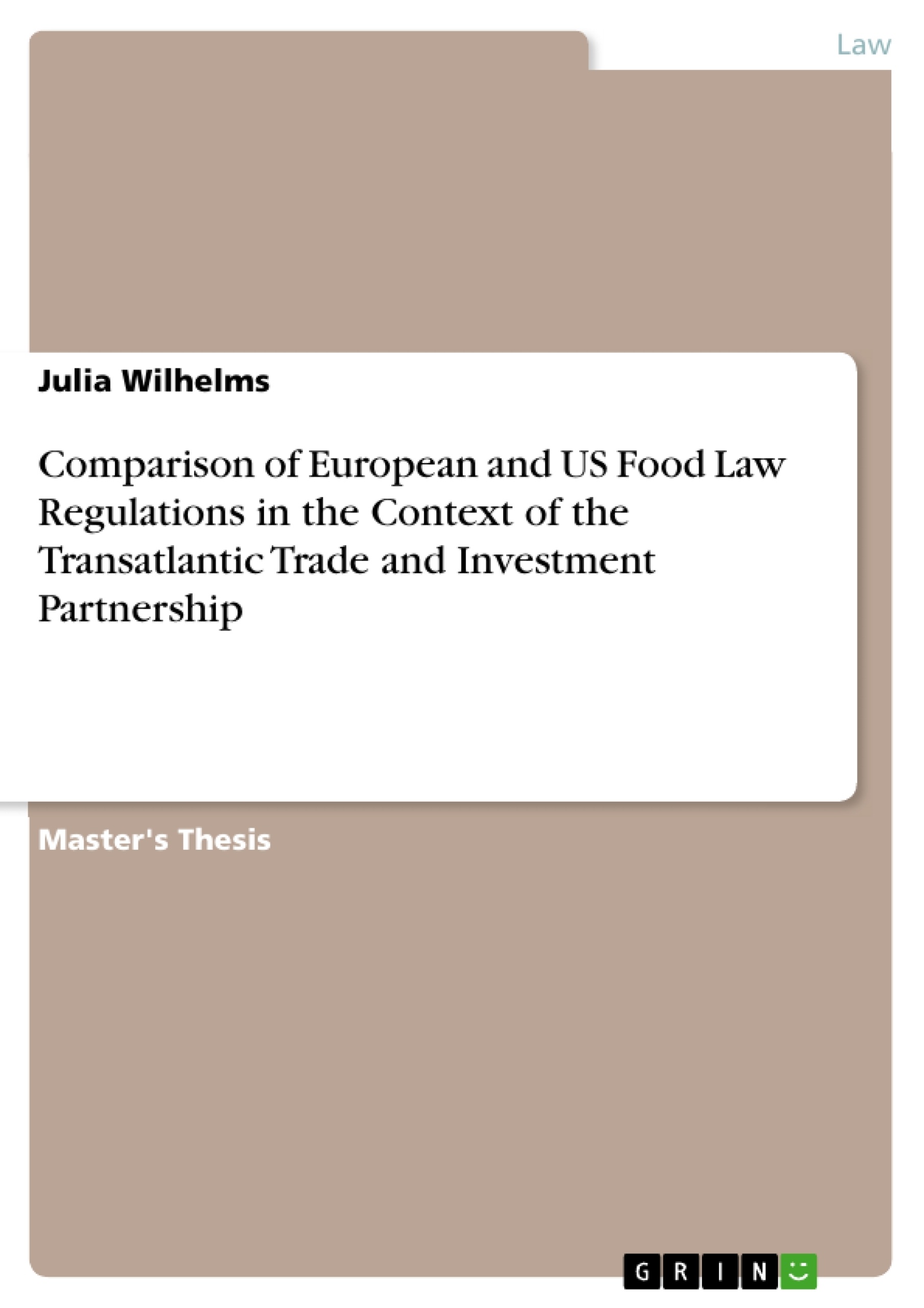In July 2013, negotiations concerning the Transatlantic Trade and Investment Partnership (TTIP) were initiated. Objective of the negotiations is the generation of a Free Trade Agreement (FTA) between the United States (U.S.) and the European Union (EU) to promote trade by reducing trade barriers, including tariff and non-tariff ones.
In order to achieve this goal, several issue barriers have to be addressed, inter alia concerning non-tariff barriers including regulatory differences in the sectors of agriculture and food production. While the U.S. and the EU both have high standards concerning the consumer protection and food safety assessment, differences in the basic principle and implementation persist. Both countries pursue an agreement that follows the respective principles and still provides effective trade stimulation. However, based on the rooted differences in the particular food safety systems, challenges are inevitable.
The objective of this study is the presentation of the U.S. and EU food safety system as well as special cases highlighting the differences between both systems in terms of risk assessment, prevention, responses and risk communication. The different factors are analyzed both theoretically and on the basis of practical examples. Additionally, the different matters are described in the context of the TTIP to identify issues that may complicate the negotiations. Possibilities to resolve those issues are discussed and recommendations for positive outcomes given.
Table of Contents
- Introduction and Objective
- Structure of the food safety system
- Food Safety System in the U.S.
- Food Safety System in the EU.
- Risk Analysis
- Risk Assessment
- Prevention of food safety problems
- Response and risk communication
- Special cases
- Meat production
- Hormones in meat
- Antibiotics in meat
- Beta-Agonists in meat
- Organic food
- Food labeling
- Genetically modified crops, food and feed
- Food additives
- Eggs
- Meat production
- Chances and challenges of the Transatlantic Free Trade Agreement (TAFTA)
- The Transatlantic Trade and Investment Partnership (TTIP)
- General Benefits
- Consequences for the EU and the U.S.
- Conclusion
- Summary
Objectives and Key Themes
This study aims to present the food safety systems of the US and the EU, highlighting key differences in their risk assessment, prevention, response, and risk communication practices. It analyzes these factors both theoretically and through practical examples, while also exploring the implications of the TTIP negotiations. The goal is to identify potential complications arising from these differences and discuss possible solutions, offering recommendations for a successful outcome.- Comparison of U.S. and EU food safety systems
- Analysis of risk assessment, prevention, response, and risk communication
- Exploration of special cases like meat production, organic food, and GMOs
- Examination of the TTIP and its potential impact on food safety regulations
- Identification of challenges and opportunities for harmonizing food safety standards
Chapter Summaries
- The first chapter introduces the study's objective, focusing on the TTIP negotiations and the need to address regulatory differences in the food safety sector between the U.S. and the EU. It highlights the importance of balancing consumer protection with trade stimulation.
- The second chapter presents an overview of the food safety systems in the U.S. and the EU, outlining their respective structures and key organizations. It emphasizes the differences in their approaches to food safety regulation.
- The third chapter delves into risk analysis, examining its three key components: risk assessment, prevention of food safety problems, and response and risk communication. This chapter compares the methodologies and practices employed by the U.S. and the EU.
- The fourth chapter explores specific cases of regulatory differences, including meat production, organic food, food labeling, genetically modified crops, food additives, and eggs. It examines the different approaches and regulations in the U.S. and the EU for each of these areas.
- The fifth chapter analyzes the chances and challenges of the TTIP, focusing on its potential impact on the food safety regulations of the U.S. and the EU. It highlights the need for a balanced approach that promotes trade while maintaining high standards of food safety.
Keywords
This study focuses on the comparison of food safety regulations in the US and the EU, specifically examining the potential impact of the TTIP negotiations on these regulations. Key topics include risk assessment, food safety systems, food labeling, GMOs, meat production, organic food, and the harmonization of regulatory standards.- Quote paper
- Julia Wilhelms (Author), 2014, Comparison of European and US Food Law Regulations in the Context of the Transatlantic Trade and Investment Partnership, Munich, GRIN Verlag, https://www.grin.com/document/286574



